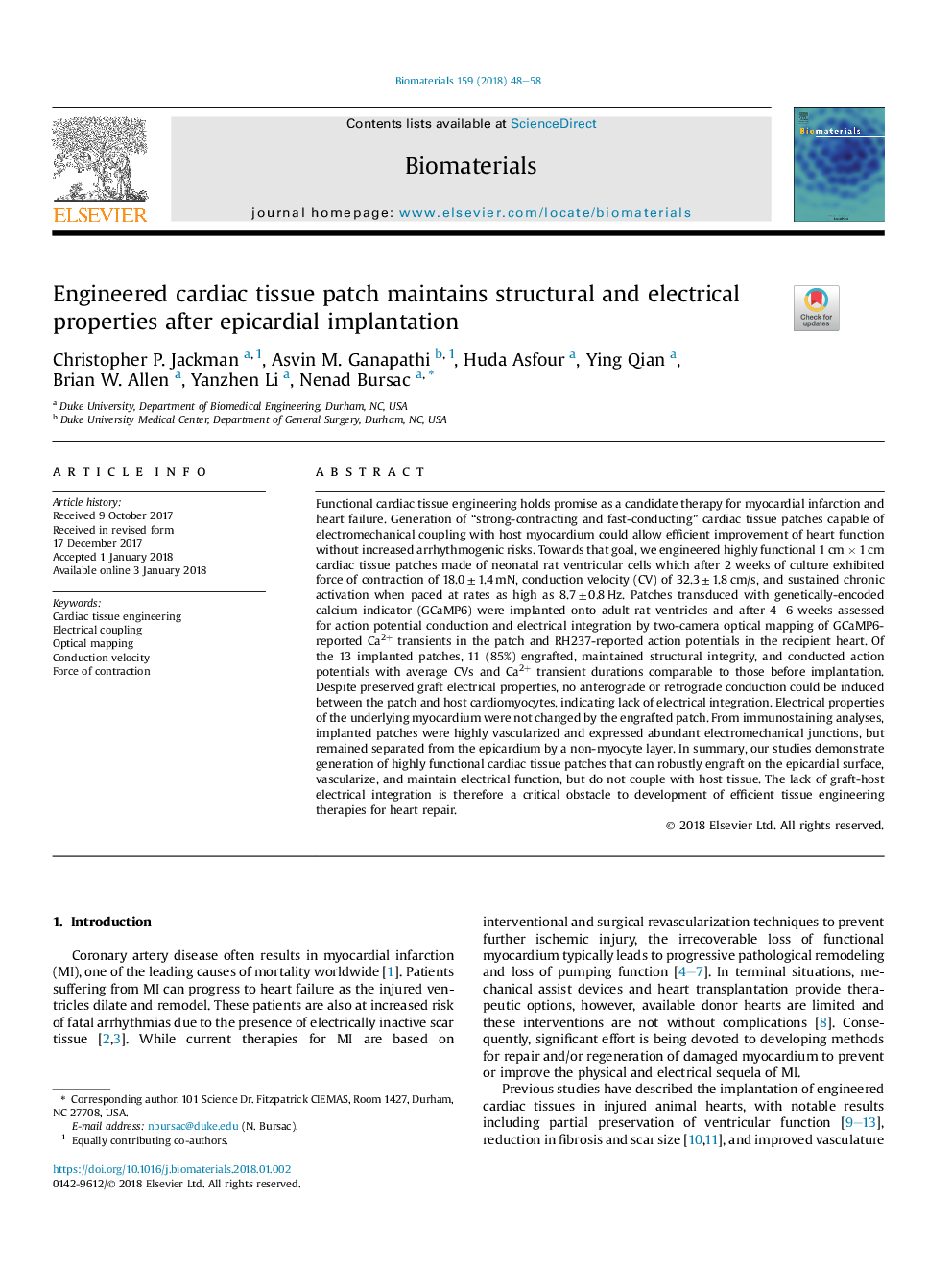ترجمه فارسی عنوان مقاله
پچ بافت مهندسی شده قلب پس از اپیکاردی خواص ساختاری و الکتریکی را حفظ می کند
عنوان انگلیسی
Engineered cardiac tissue patch maintains structural and electrical properties after epicardial implantation
| کد مقاله | سال انتشار | تعداد صفحات مقاله انگلیسی |
|---|---|---|
| 129082 | 2018 | 11 صفحه PDF |
منبع

Publisher : Elsevier - Science Direct (الزویر - ساینس دایرکت)
Journal : Biomaterials, Volume 159, March 2018, Pages 48-58
ترجمه کلمات کلیدی
مهندسی بافت قلب، اتصال برق، نقشه برداری نوری، سرعت هدایت، نیروی انقباض،
کلمات کلیدی انگلیسی
Cardiac tissue engineering; Electrical coupling; Optical mapping; Conduction velocity; Force of contraction;

